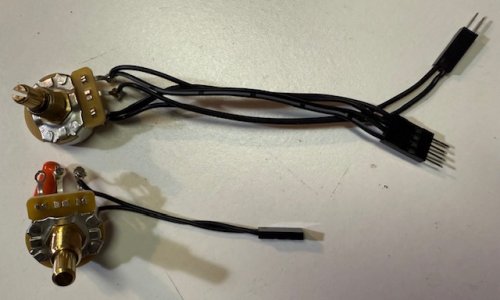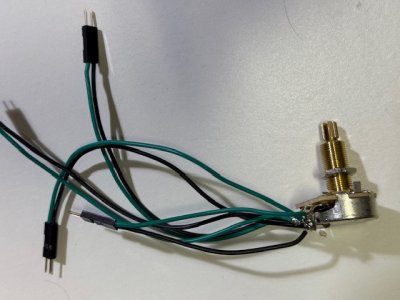rockandroller
Senior Member
- Messages
- 592
Nice work! That's the way to do it. Mil-Spec wiring for the WIN 

Heh - next time, I’ll lay in a stash of -999 connectors and really hit the MIL-SPEC button hard! (but…it would definitely be a weird but cool look to attach the guitar to the amp with a triple-niner connector screwing onto the guitar!)Nice work! That's the way to do it. Mil-Spec wiring for the WIN
I didn’t research these connectors by part number and spec; I did some online searching about what kind of connectors EMG uses and eventually got to the phrases “DuPont connectors” and “Molex connectors”. It turns out there is some overlap between the two, but if you’re trying to create connectors that will work in an EMG solderless environment, or could be used for your own solderless interconnections, and work with the same wire gauges that EMG uses in their solderless system, you want DuPont 0.1 inch pitch connectors, and they’re easy to find without needing detailed part numbers and specs.Good write up, but it may also be worth posting the part numbers / specs of the DuPont connectors.
Oh I understand; my language was informal in using “you”, not meaning to imply you specifically were going to do some of this@mycroftxxx thanks for posting the additional information. The reason I was asking was not because I need it, but rather as a resource for others who may need it.

I haven’t tried a linear taper pot although I may try one at some point. I also want to try a reverse log taper, which would basically be a left-hand normal taper but swapping the hot and ground lugs. I’ve also kicked around taking an EMG left hand volume pot and rewiring which lug goes to which side; the advantage there is that I wouldn’t have to build connectors for it. But since I know how to build the connectors now, a high quality CTS reverse audio taper aka a left hand volume pot is probably the next step. Not for a while though!I’m curious about your search for volume control pots. Have you tried using a linear taper volume pot, and how did it wok for you?


